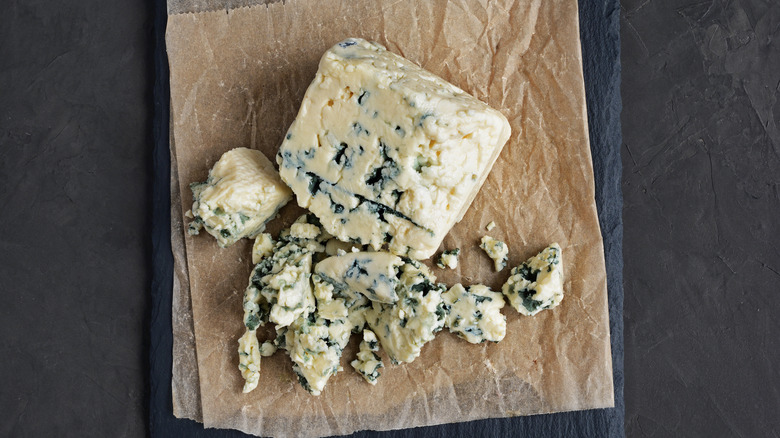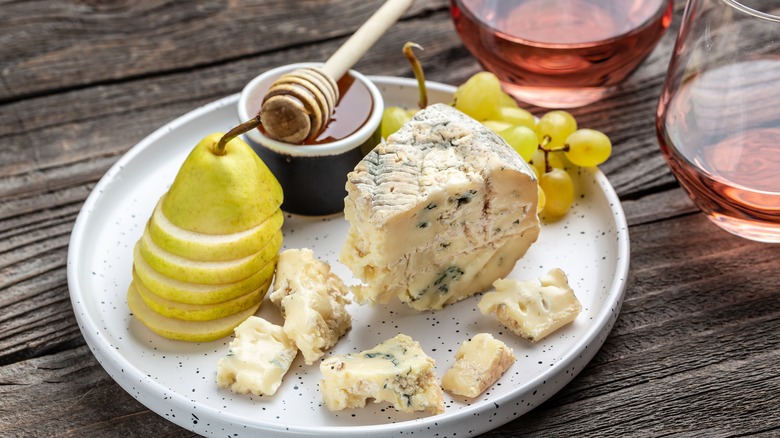The Blue Cheese Myth You Should Stop Believing
Cheese boards are experiencing a renaissance of sorts thanks to the colorful, whimsical, creative boards influencers began posting on social media, per Business Insider. There are books devoted to the precise science of creating visually stunning charcuterie platters, and Instagram accounts that feature nothing but color-coded plates of cheese with the perfect accompaniments. Parties just aren't parties anymore unless a cheese board is present. Not that this is a bad thing; seriously, who doesn't love cheese? While it couldn't be a better time to be a cheesehead, there are certainly varieties that people love more than others.
According to a Tasting Table survey, readers said the cheese they most liked to see on a cheese board was cheddar or gruyere. The same wasn't true for blue cheese, which brought in the least number of votes.
There are certainly a devoted group of people in the world who hold blue cheese in the highest regard, but inevitably, there are also those who despise it. There are still others who have never tried it, arguably in part to its reputation that, frankly, stinks. It's obvious how blue cheese could garner some false assumptions based on how it looks (moldy), how it smells, (funky), and a person's past experiences. For example, if all the cheese you knew was American cheese slices and someone gave you a chunk of Roquefort, you might be traumatized. But these preconceived notions are far from true.
Not all blues are the same
Blue cheese can look quite shocking, especially when placed next to familiar rounds of brie or slices of cheddar. After all, there are prominent lines of blue-looking mold running through that wedge of Gorgonzola. Add in the pungent smell and people automatically assume it is full of very strong flavors, flavors they believe their delicate palate will not enjoy. But looks (and smells) can be deceiving. According to The Washington Post, blue cheese is now made in almost every cheese-making country in the world, offering consumers more options in texture and flavor than ever. In fact, the publication believes that if you enjoy wine, beer, kim chi, sourdough bread or any other fermented food or drink, there is likely a blue cheese for you.
All you need to do is start with something mild, a task that a cheesemonger or farmer's market purveyor should be able to help you find. Wine Enthusiast argues that Cambozola Black Label and young Cashel Blue are among the mildest blues on the market. In addition, the magazine encourages blue newbies to sample the cheese with complimenting wines, fruits, or honeys that will bring out the flavors in the blue.
Not a wine drinker? No problem. The Washington Post says stouts, whiskeys, and pumpkin beer are great counterparts to blue cheese as well. All in all, blues don't have to be as potent as you've heard, and by giving them a chance, you just might discover something unexpected and delicious.

